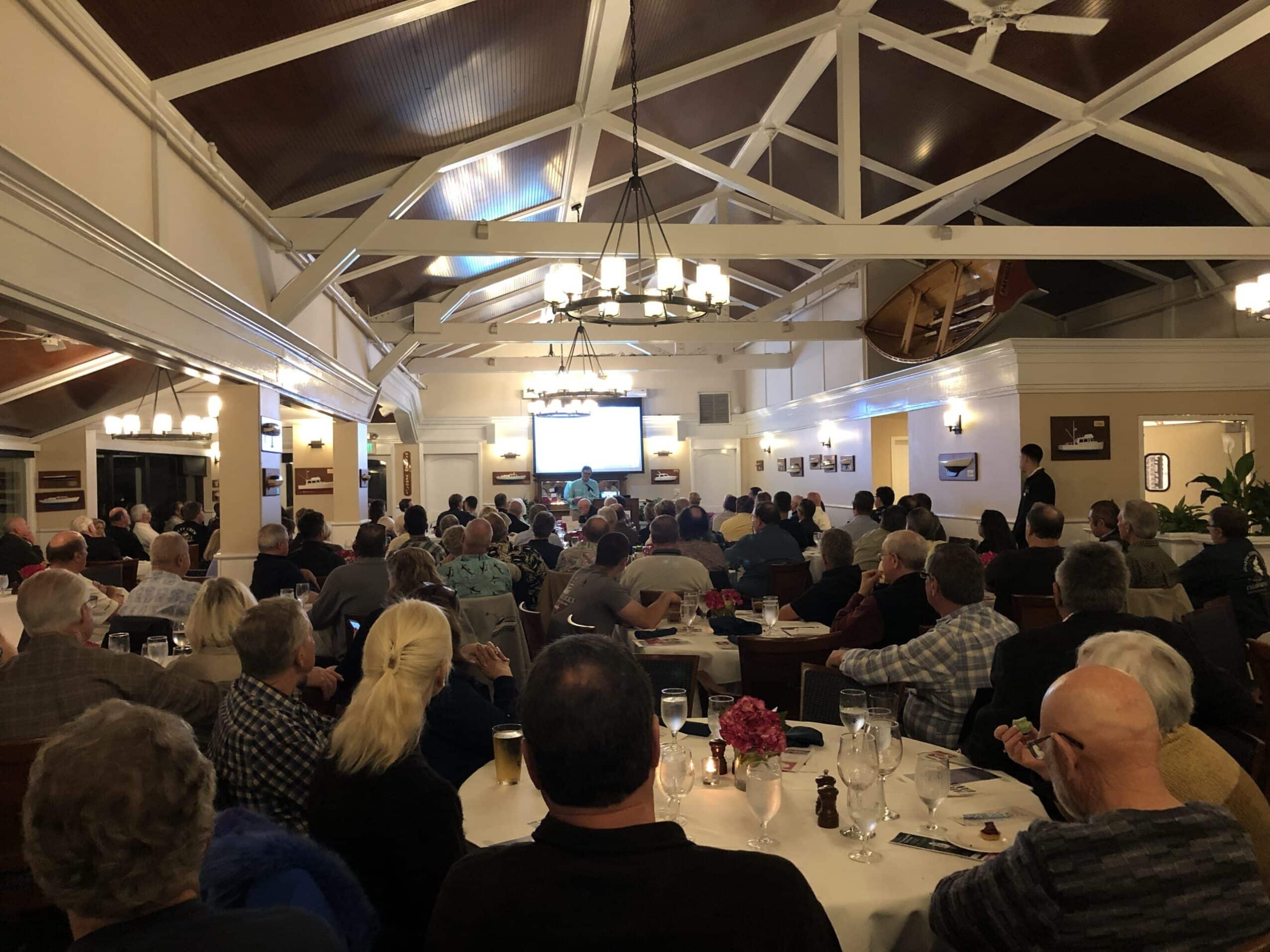The Balboa Yacht Club was packed on February 28th for a big night as Dr. Barbara Block was on hand to share some of her data and what she has been finding out about bluefin tuna, both in the Pacific and in the Atlantic. CCA CAL Chairman Bill Shedd, CCA Member Paul Fruchbom and Dr. Block teamed up back in August of 2018 to go out and tag Pacific bluefin tuna off of our coast in California. The trip was successful as they were able to tag 7 bluefin tuna, one of which taped out at 72.5 inches and weighed an estimated 250 pounds.
Dr. Block, from Stanford University, gave a very informative presentation on her efforts throughout almost her entire career on tagging bluefin tuna, primarily in the Atlantic, until recently. Block and her team have successfully tagged over 1,000 fish over almost 2 decades. These tags, both archival tags and satellite tags, have been surgically planted in these fish to track their migration patterns. An archival tag is planted internally and can give up to 5 years of information on the fish including body temperature, diet, and pressure. The pop-up satellite tags are good for approximately 1 year, which they will pop up to the surface and deliver information such as the track and behavior of the fish.
One of the biggest problems that Dr. Block faces with the archival tags is that they must be returned in order to collect data. There are big rewards for those that are returned, but the return rate of these tags is just 50%. Block has gone as far as labeling these tags with different languages that clearly depict it to be a tag and there is a reward. She is seeking greater cooperation and partnership with foreign countries in the western Pacific to try get more of these tags returned.
One of the biggest questions that Block is trying to answer revolves around the age class at which bluefin tuna spawn. Countries such as Japan and Taiwan believe that pacific bluefin tuna spawn at around year 3 or 4. However, Block firmly believes that the age class at which they span is around the age of 8, when the fish weigh around 250 pounds.
“We have, in the past three years, been tagging Pacific Bluefin of year classes that are no five to eight years old here in our California waters, and to date, these large fish have returned to western Pacific waters at eight years of age. In addition, we have examined some of the sport-caught fish, and we’ve noticed that non of the female bluefin tuna are reproductively active, although some are close,” Block said. “So it leads us to believe that the bluefin we are fishing off San Clemente and 60-Mile Bank are spawning at approximately eight years of age or older – much like the Atlantic bluefin tuna population of the Gulf of Mexico.”
Overall, it is apparent that the bluefin population in the Pacific is in very poor shape, the main reason being that other foreign countries on the western side of the Pacific are catching too many of the smaller class of fish in years 1 and 2 (a little less than 20 pounds).
CCA CAL is is planning to do much more with Dr. Block and her team, starting in August 2019, when we will have another trip to tag bluefin off of the California coast. With cost of these tags being high, there will be a limited number of boats that will be able to tag with us. However, we also are asking for sponsorships of tags by any businesses, clubs, or anglers will to help out. The more tags we can implant, the better the information they can provide.
A big thanks to everybody who came out to talk bluefin tagging with CCA CAL! Also, we’d like to thank CCA CAL Chairman Bill Shedd, CCA Member Paul Fruchbom, Dr. Barbara Block, the CCA CAL Orange County Chapter, CCA CAL State Board Members Bob Hoose, Tim Manaka, John Ballotti, Merit McCrae, Wendy Tochihara, Don Trojan, Bill Boyce, and Bob Kurz. And thank you to all our members for being there.
If you are interested in participating in our tagging efforts, please contact us. Also you can visit our photo gallery to see pictures from the night. Video from the night will be available soon!





